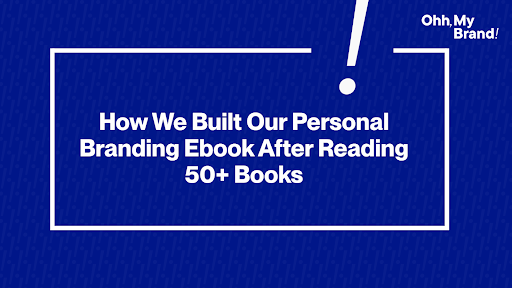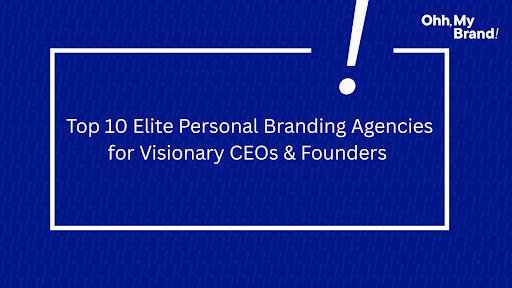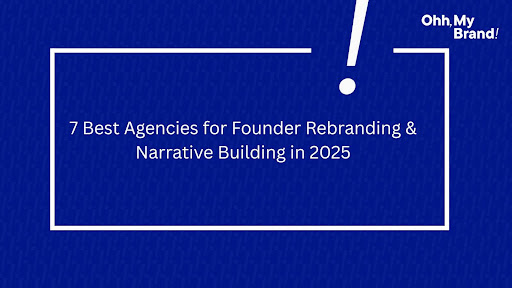

You know what? You should really reward us for this. We actually spent a lot of time reading over 50+ books so that we can bring you one simple and powerful ebook called “Become Someone From No One” that we have created on personal branding. This ebook, crafted by Sahil Gandhi and Bhavik Sarkhedi, is deliberately designed to make sure you do not have to read those 50+ books that we have read to create this.
Don’t worry, we are not going to bore you by telling you the names of all the 50+ books, but yes, along the way, we will be mentioning names of some good personal branding books that you should know about. But hey, we read them all to make sure you get the right extraction of all of them in just one book. Yes, all these books were on branding, marketing, and self-development, and from all of them we distilled the most actionable insights to create a comprehensive personal branding eBook. Before we dive into the process of personal branding strategy to give our ebook shape and value, let’s jog our memory on some basic topics that still lay the foundation of personal branding.
Why Personal Branding Matters
Personal branding—the term itself has its own persona. Today, being a skilled individual in your field won’t cut it. You need to be more than that, and what is more than becoming a brand yourself? According to a 2023 Harvard Business Review article, your success, whether landing a job, securing a promotion, or building a following, depends on others recognizing your value. It’s not just about always being a founder, CEO, or an entrepreneur. Even if you are just starting off in your career, you must plan to invest in yourself to become a personal brand. That way, you ensure that nobody takes you for granted and everybody takes you seriously. If you have the slightest update on the job market, you can’t do anything but agree with us. But personal branding doesn’t stop there. It goes deep and cuts sharp if you know how to use it. With that thought in mind, let’s see the process we followed to create our personal branding ebook.
Step 1: Defining Purpose and Audience
Of course, this has to be the very first step. I mean, think about this: even if it wasn’t an ebook, it could have been any product or service. But before you invest in its creation, you need to ask, analyze, and arrive at the understanding of who really is going to buy the product and, more importantly, what is the purpose of the product, in this case the ebook. What is the problem it is solving, or is it providing any value to its target audience or the target market?
Reinventing You by Dorie Clark is a great example. The book stresses the significance of defining the mission, passion, and strengths while identifying who you want to impact.
This made us question ourselves, but in a positive manner.
We asked ourselves: What unique value can we offer, and who is our audience? Our goal was to empower professionals, creatives, and entrepreneurs to build authentic brands without feeling like “walking billboards.” They made us describe our audience as
Creative professionals seeking authentic self-promotion.
Entrepreneurs aiming to stand out in niche markets.
Career changers are in dire need to redefine their professional identity.
This was the exact crystal-clear clarity we were seeking to shape our eBook’s tone, approachability, actionable merit, and empathy quotient. We also ensured it fell in line perfectly with the readers.
Step 2: Auditing Our Brand Equity
Once we were well aware of our ebook’s purpose and target audience, we decided to check on our brand equity. This basically informed us on our prevailing brand presence and, in common words, the reputation and goodwill of our brand. It is important for us to mention another book, which is Blue Ocean Strategy by W. Chan Kim and Renée Mauborgne. It truly made us look from a different perspective and fairly moved us to work harder and differentiate ourselves in a crowded market by creating “blue oceans” of untapped opportunities. We cataloged our credentials, conducted self-assessments, and sought feedback from peers to understand how others perceived us. This revealed multiple gaps in our online presence, such as inconsistent social media bios and outdated website content.
A 2024 Forbes Books article highlights that consistent branding across platforms increases discoverability by 68%.
Step 3: Crafting a Compelling Narrative
We studied the top 5 book frameworks, and it helped us understand which framework will best suit our book based on the content, value, and insight we want to deliver to our audience and ebook readers. Now, the very important factor of any book is how it takes the reader on a journey. This can be mastered by practicing and becoming efficient in the art of storytelling. Here we would like to mention another good book called Building a StoryBrand by Donald Miller.
This book gave us the missing piece in our personal branding puzzle of how to build a personal brand. Only by reading and studying from it do we fathom the concept of positioning our audience as the hero and ourselves as the guide, creating narratives that align emotionally and not just die like random words on paper. We crafted our eBook’s narrative around our journey of transforming from novices to confident brand-builders, using real-life examples to make it relatable.
Of course, there are other books like Becoming by Michelle Obama that taught us to contemplate the existence and influence of vulnerability, weaving personal nuances and experiences into our eBook. A 2025 Creative Boom article notes that authentic storytelling increases audience trust by 55%. Our eBook includes prompts for readers to craft their own stories, inspired by The Art of Possibility by Rosamund Stone Zander, which encourages uncovering unique perspectives.
Step 4: Designing Visual and Verbal Consistency
This is something we paid close attention to after the content and valuable insights. We wanted to give our readers something that is pleasing to their eyes. For this we studied Brand Book Design by Digital Silk. It helped us to define our logo, color palette, and typography. Both Bhavik Sarkhedi and Sahil Gandhi agreed to choose a clean, minimalistic design with a font that goes well with it and a vibrant yet professional color scheme. A 2025 FlippingBook study found that cohesive visual branding boosts recognition by 80%.
Step 5: Structuring the eBook
Our ebook needed a user-friendly structure. When we first thought about giving a proper shape to our book. We went through the structures of all the 50+ books and decided on a particular framework that suited the narrative of our ebook. This way we knew what we wanted to say and stayed in control of how we were saying it to our readers.
Each section includes topic-based value-added knowledge. Something we made sure to distinguish our book from others. It was important for us to put in detail and ensure that the design met the eyes of the reader in a pleasing way. What good is a book if the reader finds it confusing and its visuals hurtful? This was the focused line and brief given to our designers.
Step 6: Leveraging Digital Platforms
Again, this is something you need to do for your product, which in our case was an ebook. We built a content funnel, starting with social media teasers, driving traffic to our blog. The book is on branding, but we cannot forget that the book itself is a product and so needs its specific branding as well. We have branded & marketed the book across all platforms and channels to make sure we are attracting the right audience with us for the book. The book will only get better when someone reads it, and that’s our clear motto.
Challenges and Lessons Learned
Forget creating; the basic process starts from writing. We knew that to become good at writing, we have to become good with our reading. That was the reason why we studied 50+ books on branding and marketing as a whole creative exercise. Of course we knew that creating a whole ebook won’t be a smooth ride with no hurdles for us. We faced a bit too many challenges with information overload and deciding on what to keep and what to eliminate, not based on what we liked but on the basis of what was of prominence. Learning How to Learn by Barbara Oakley helped us prioritize actionable insights. As we mentioned before, we also faced design challenges, because we just wanted everything to be perfect; it took time, but we guess there is no harm in that.
Conclusion
At last, we can only tell you that it has been an amazing experience for us to cater to more than 50 books. We would be lying if we said that it felt a little too much at first when we started, but slowly we understood the assignment, and the objectivity became more clear. Building our personal branding eBook after reading over 50 books was a revolutionary journey. By defining our purpose, auditing our brand, crafting narratives, ensuring consistency, structuring content, leveraging digital platforms, and strategizing distribution, we created a resource that’s both practical and inspiring. Download the Personal Branding Gold Mine eBook, it contains the top personal branding insights, and we just hope that you use this book in the right way to make the best of your product’s branding and get to your best desirable results.









.svg)
.svg)
.svg)
.svg)
